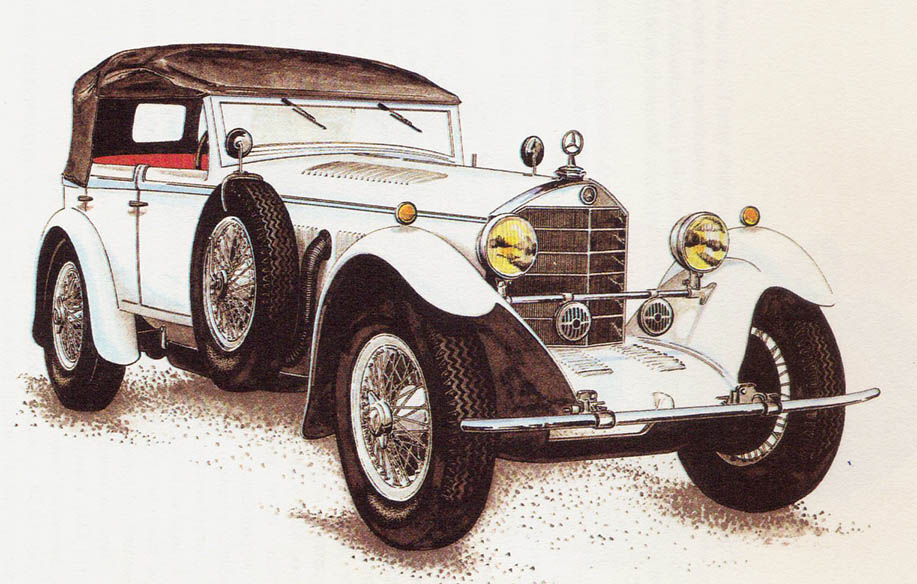MERCEDES-BENZ SS – year 1929
Manufacturer: Daimler Benz AG, Stuttgart-Untertürkheim, Germany.
W 1923 r. Paul Daimler, syn Gottlieba, retired as chief designer at Untertürkheim, which he has held since 1907 r. A new name appeared in the company - Ferdynand Porsche. Porsche contributed to the development of the new two-liter cars, 8-cylinder engines, on which the power was achieved 95,53 kW (130 KM) the 110,2 kW (150 KM) in the version with a compressor. These were racing car engines. At the same time, he developed a completely new 6-cylinder engine for the series production cars 400 about engine capacity 4 liters and power 51,5 kW (70 KM), or rather 73,47 kW (100 KM) with compressor and type 600 with a 6.3-liter engine with power 73,5 the 102,3 kW (100 the 140 KM). W 1926 r. Daimler and Benz merged, creating the joint stock company Daimler-Benz AG.
New car factory, responding to the development directions in 1927 r. - heavy cars with a mass 2500 kg on high wheels - implements a new type of construction 630 K. The letter K is not an abbreviation of the word "compressor”, but a shortened 'dust”. For the type 630 K comes type 680 S, which, thanks to its lightweight chassis, becomes the basis of successful racing car designs. The capacity of the engines is constantly increasing, and the chassis mass drops from 1500 kg in 1270 kg.

Manufacturer: Daimler Benz AG, Stuttgart-Untertürkheim, Germany.
A type arises 710 SS with displacement engine 7065 cm3. With the diameter of the cylinders 100 mm and piston stroke 150 mm developed a power of 124kW (170 KM), by 2990 rpm or 150,61 kW (225 KM) by 3300 rpm in the version with a compressor. The engine has a modern design: block, crankcase, cover, the cylinder heads and pistons are light alloy. The sleeves and cylinder heads are made of cast iron, chrome-nickel steel crankshaft. Only one gasket was used to seal the engine - under the cylinder head. The sporting successes of this model appeared from the very first start in 1927 r. at the Nürnburgring, where Mercedes cars took the first three and fifth place.
W 1928 r. F. Porsche left the company. His successor Hans Nibel, also an outstanding constructor, exerted a serious influence on the further development of the plants.
From 1929 r. the most frequently shortened versions of the model participated in the races, marked SSK, and the SS model got a standard body. In the years 1928-1934 approx. 300 type A cars, SS, SSK and SSKL. Their price fluctuated within limits 30 000 marek.